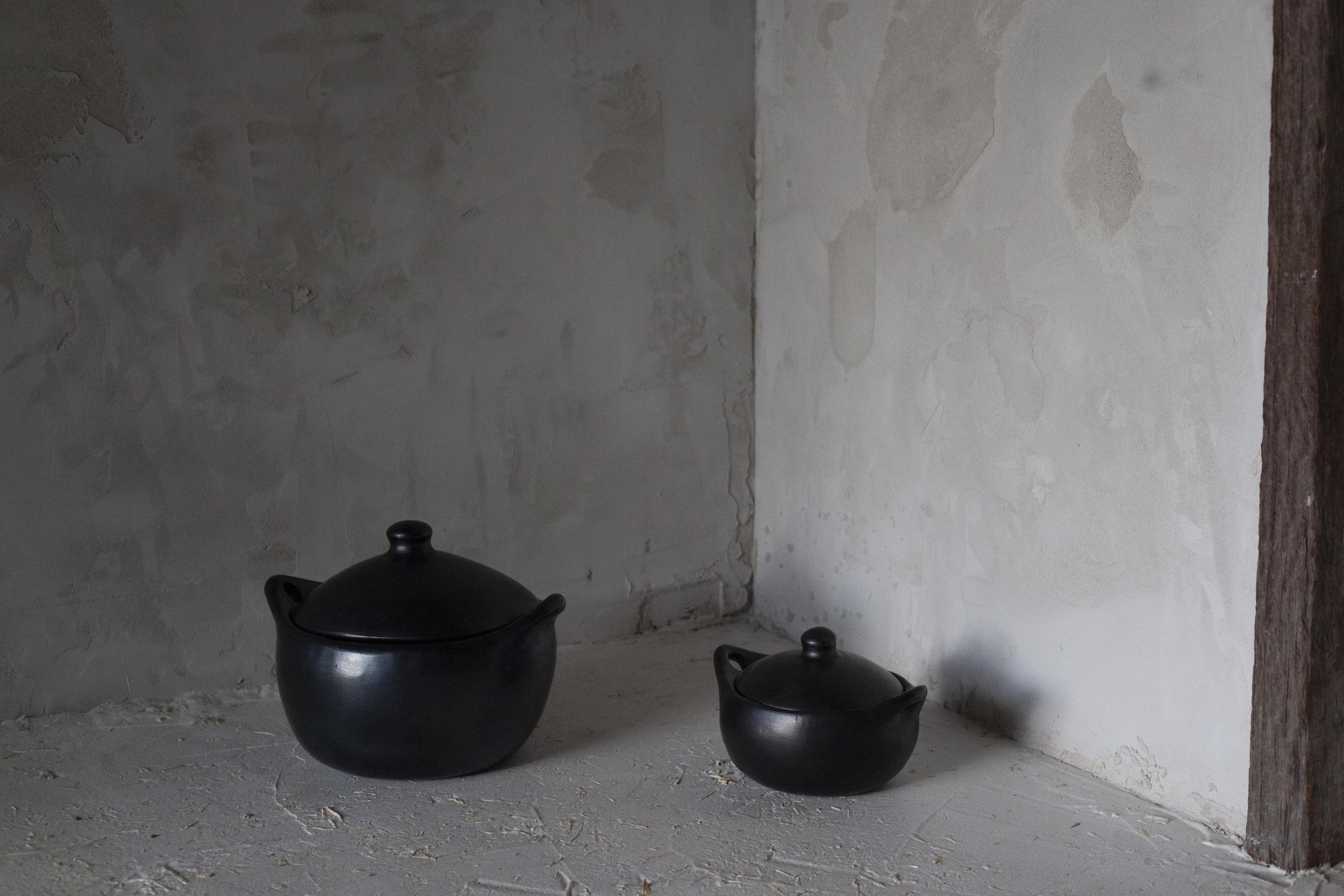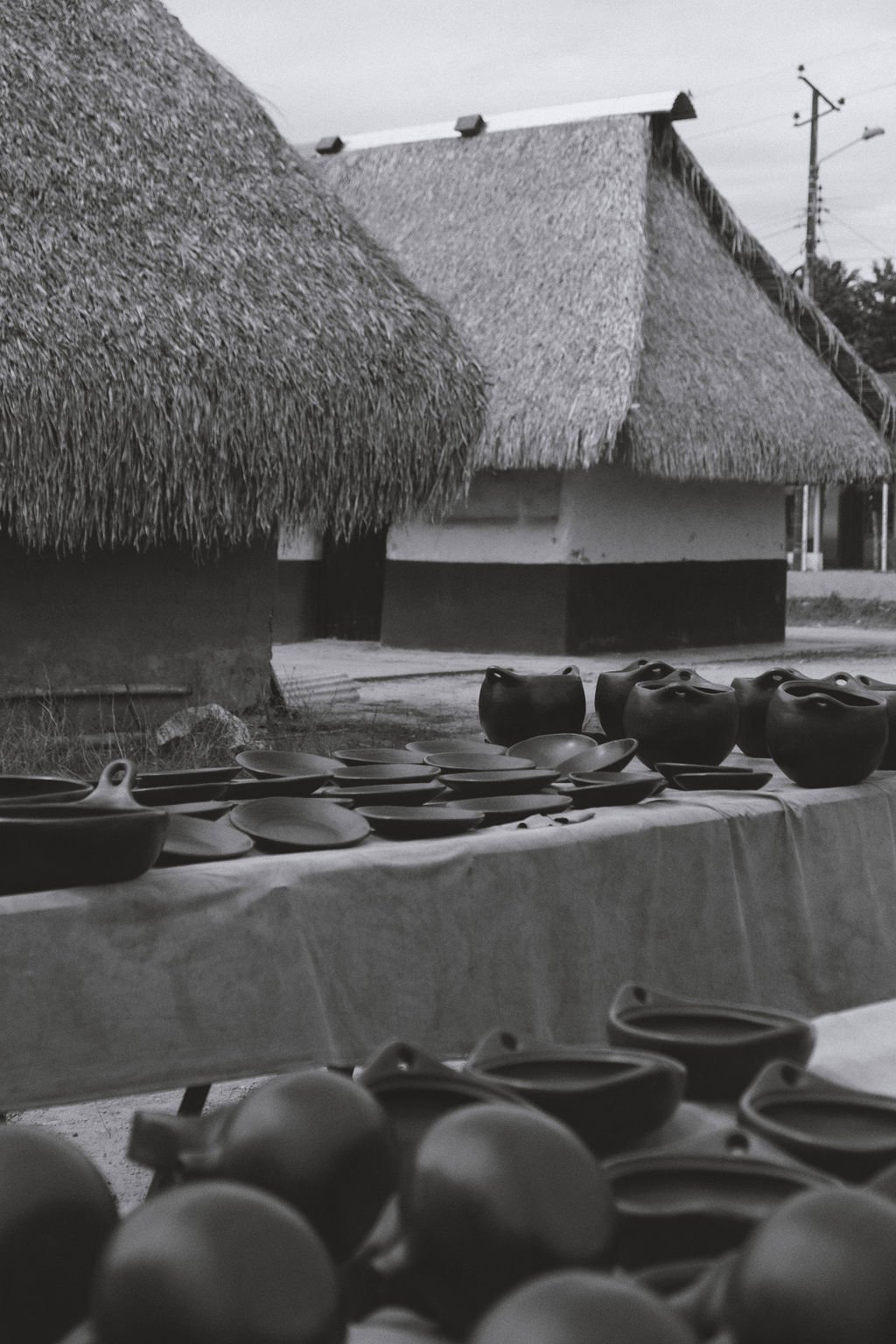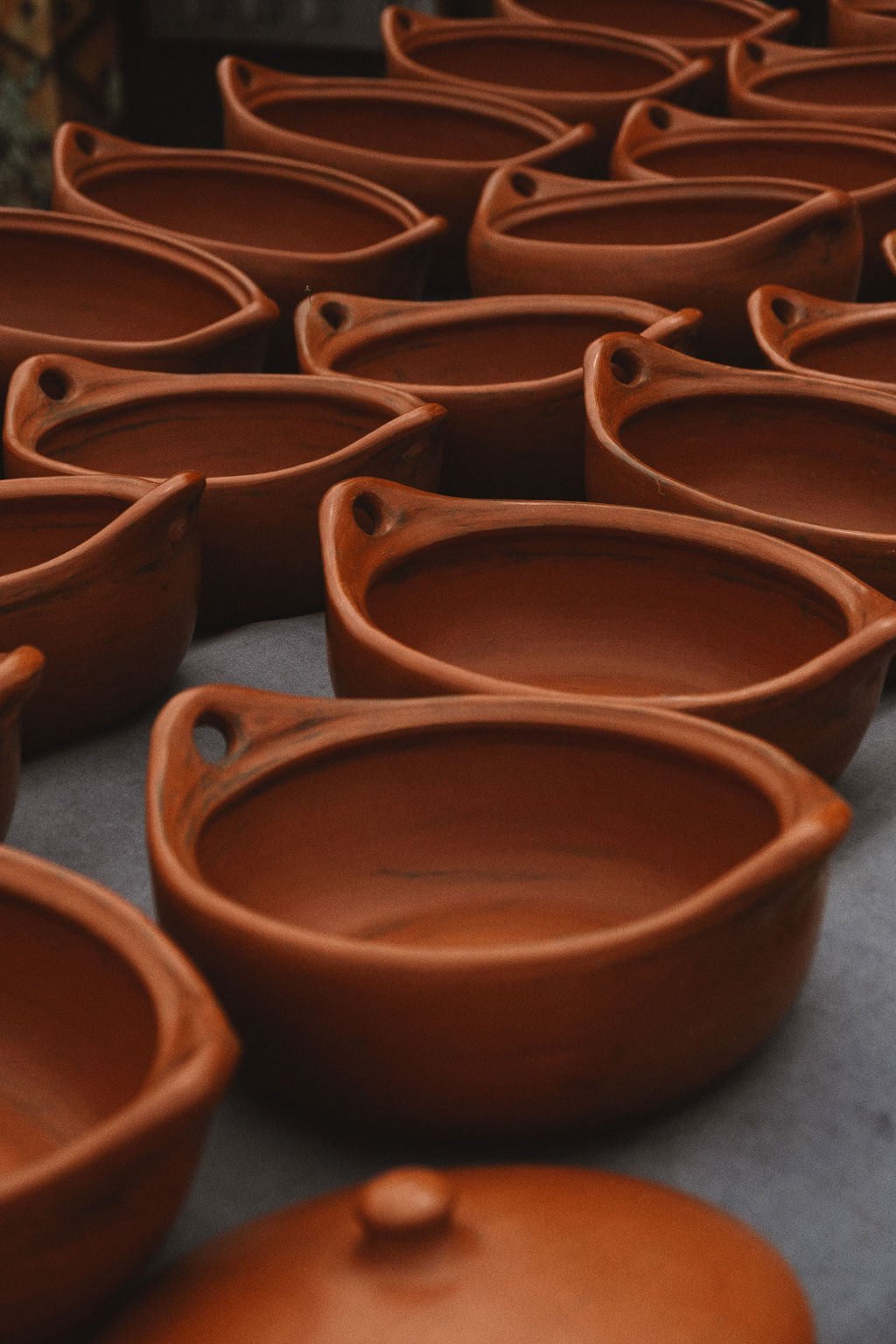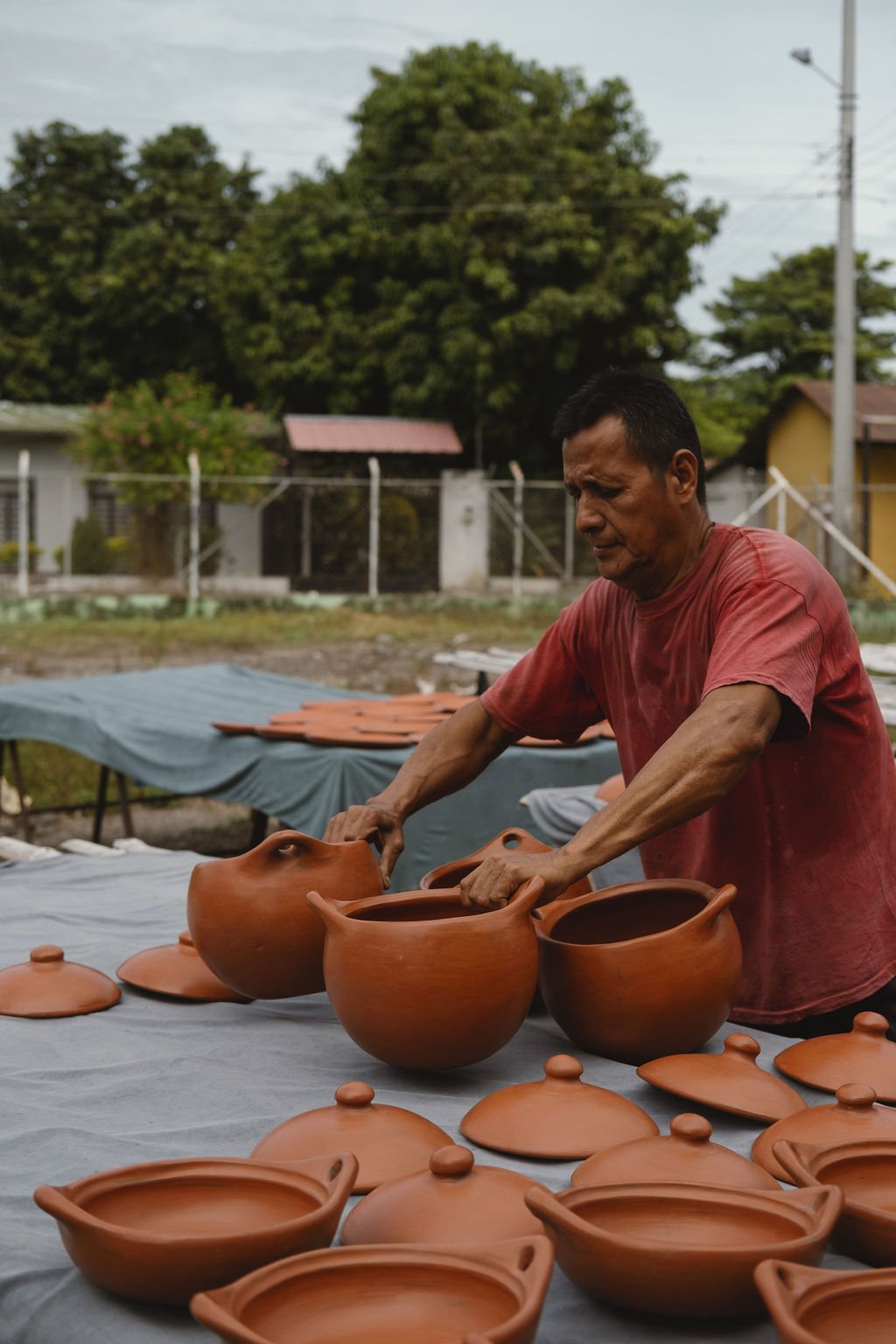OVUM - Clay Pot











OVUM - Clay Pot
These pots are handmade in a small village called La Chamba in the Andes of Colombia. The origin of this cookware can be traced back over 700 years to vases and pitchers found in archeological sites.
They are a delight to cook with and have been used for generations. I believe cooking in clay pots makes your food taste better and they transfer heat more deeper than metal.
The process of making these pots has been passed down the line from mother to daughter. The local clay of the area is harvested and mixed with sand and water. Each piece is then moulded, trimmed and smoothed by hand. The vessels are coated in a terracotta clay glaze and then left to dry in the sun.
After drying, the surface of the pots are rubbed and polished by hand using local stones which gives the pots their natural patina and sheen. They are then placed in large drums and fired, with horse manure added at the end which burns off and gives the vessels their unique black sheen.
As these products are handmade, each piece is unique and may vary slightly from the photograph.
NOTE - hairline cracks may form on the bottom of your pot after several uses. This is normal and will not affect your cooking or the strength of the pot. Some other clay pots contain chemicals to prevent this, though our pots are 100% natural clay. If your pot is leaking, please contact us or see the blog post ‘healing clay pot cracks’.
Seasoning - before use
Wash the pot with an eco detergent to remove any residue from the firing process. Fill the pot 3/4 full of water and place in the oven for 30 minutes at 200 degrees celcius. This is an important process and helps to seal the pot. Due to the porous nature of this clay, a complete seal may be achieved after the pot has been used several times for cooking.
Use
These pots can be used on the stove top, gas flame, in the oven and on an open flame. We recommend using wooden utensils when cooking. If you’re using your pot on the gas flame, stove top or open flame, always ensure you begin heating the pot on a low heat and increase gradually over time to avoid the risk of cracking.
Avoid exposing the pot to sudden temperature changes. Do not put a hot pot straight in the fridge, allow the pot to cool before placing it in the fridge. Also, do not put a cold pot that’s been in the fridge straight onto the heat, allow the pot to come to room temperature before heating.
Cleaning
I recommend not using any harsh detergents when cleaning your pot or on any of your cookware. If there is food burnt to the bottom of your pot, soak in hot soapy water for a few hours and scrub with a non-abrasive pad or brush. These pots are dishwasher safe, though we do recommend hand washing.
